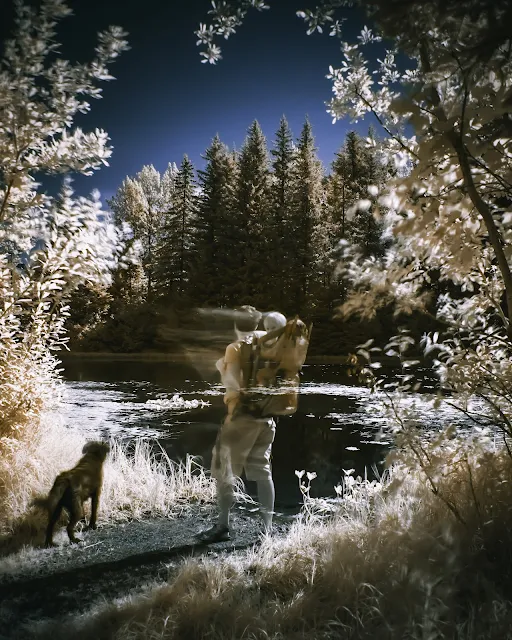 |
| New York Skyline image by Pep Ventosa |
This photographer is Pep Ventosa.
Background
Born in Spain in 1957, Pep Ventosa is a photographer whose innovative style has garnered international awards. His trademark technique involves taking multiple exposures of a subject and overlaying them carefully in a way that creates an impressionistic result that is full of movement and life. He often uses iconic subjects, such as the Eiffel Tower or the Golden Gate Bridge. But some of my favorite images of his are of things less dramatic and more in tune with the every day. His series, Trees in the Round, were the works I was originally drawn to. And when I first encountered them, I knew it was a technique I wanted to try for myself.
Style Analysis
 |
| Red Tree in the Round |
As with my previous examination of inspirations such as Alexey Titarenko and Trent Parke, I wanted to take Ventosa’s style and see how I could put my own spin on it. But this multiexposure technique is not easy and quite time consuming. To get a single final image, you must take dozens of photos, edit each of them separately then painstakingly overlay them. Nothing in the final result is random and if you don’t pay careful attention to detail, this style can quickly get away from you and start to look messy. I found when going about my hometown looking for subjects for this style of shot, that it takes a different eye to imagine what might work, and I admit that quite a few of my attempts fell on their faces. Some of them, however, I felt quite happy with and I thought the result provided exactly that thing I’ve been looking for with my photography, which are images that stand apart as something different, something that could not have been a mere snapshot taken by anyone with the camera on their phone. Let me know which of these, if any, you like in the comments.
Conclusion
Pep Ventosa is a master. His images are unique and unmistakable. They’re beautiful, intriguing, groundbreaking. For me, they represent the best side of digital photography. He doesn’t create something fake that never existed, but instead presents familiar scenes in a way they’ve never been experienced before. When you see one of his images, you know exactly who created it. It’s either Pep Ventosa or someone like me, trying to emulate his technique but never quite rising to the same level….
Check out my video with a how-to demonstration of Pep Ventosa's technique:
Subscribing to my YouTube channel costs you nothing and helps me out a lot. No need to even leave this page to do it, just click here:









